How to Make Your Vocals Sound Like Yeat
Yeat has developed a distinct vocal style that blends aggressive delivery, heavy vocal effects, and an overall futuristic aesthetic. His music often features deep vocal processing, including auto-tune, distortion, and creative use of reverb and delay. If you want to achieve a similar sound, you’ll need the right vocal recording techniques, plugin settings, and mixing strategies. Let’s break it all down so you can bring that high-energy Yeat vibe to your tracks.
Recording Your Vocals the Right Way
Before diving into the effects, the quality of your raw vocal recording is crucial. Yeat’s vocals often sound larger than life, but that starts with a strong performance. His delivery is full of energy, with a mix of rapped and slightly melodic tones. You should aim to project your voice with confidence, as a weak or hesitant performance won’t translate well even with heavy effects.
Using a high-quality condenser microphone will capture the nuances of your voice, but dynamic microphones can also work if you want a more raw and gritty tone. Make sure to record in a treated space to minimize room noise, as Yeat’s vocals are typically very direct and upfront in the mix.
Once you have a clean take, record multiple layers of vocals. Yeat often stacks his main vocals with subtle doubles to create thickness. Experiment with different tones and deliveries for the background layers to add depth and texture to your vocal mix.
If you want to get this process right without second-guessing your setup, using a Yeat Vocal Preset is an excellent way to streamline your workflow. These presets are pre-configured to give your vocals that processed, futuristic sound Yeat is known for.
Using Auto-Tune for Yeat’s Signature Pitch
One of the defining elements of Yeat’s vocal sound is his heavy use of auto-tune. His voice has a robotic yet expressive feel, which means setting auto-tune aggressively while still maintaining some natural movement in the pitch.
To achieve this effect, start by setting auto-tune to the key of your beat. Yeat’s songs often have melodies woven into the vocal performance, so tuning should match the instrumental perfectly. Use a fast retune speed to lock the pitch quickly, but adjust the humanize function to keep it from sounding too robotic unless you specifically want that effect.
Experiment with formant shifting to subtly change the character of your voice. Yeat sometimes uses slight shifts to make his voice sound deeper or more otherworldly, which adds to his unique aesthetic. Formant shifting can be done within auto-tune plugins or through dedicated pitch-shifting plugins.
For an instant solution, a Yeat Vocal Preset applies the perfect auto-tune settings, eliminating the guesswork and helping you achieve his sound with just a few clicks.
Adding Distortion and Saturation for Grit
A key factor in Yeat’s vocal style is the use of distortion and saturation. His vocals often have a slightly overdriven quality, making them sound aggressive and energetic. This effect is typically applied after auto-tune to maintain pitch accuracy while adding texture.
Using a saturation plugin can warm up the vocal and add subtle harmonic distortion. For a more intense effect, try using a light overdrive or even a guitar amp simulator with low gain settings. The goal is to introduce just enough grit to give the vocals an edge without making them unintelligible.
Experiment with blending a clean vocal track with a distorted version. This parallel processing technique allows you to maintain clarity while still getting that aggressive tone. You can also automate distortion levels throughout the song, increasing the intensity during hype sections like the chorus.
With a Yeat Vocal Preset, these settings are already dialed in, making it easy to achieve the perfect blend of distortion and clarity in your mix.
EQ and Compression for a Polished Sound
Yeat’s vocals are heavily processed but still sound clean and punchy in the mix. Proper EQ and compression are essential to achieving this balance.
Start by cutting out unnecessary low frequencies to remove any muddiness. Yeat’s vocals are often bright and forward, so adding a gentle boost in the upper midrange can help achieve that crisp, in-your-face quality. However, be careful not to overdo it, as too much high-end can make the vocals sound harsh.
Compression is key to keeping Yeat’s vocals consistent and energetic. Use a medium attack and release to control dynamics without killing the vocal’s natural movement. Layering multiple compressors can help maintain control while preserving some of the vocal’s liveliness. If you want that modern, upfront vocal presence, consider using parallel compression, blending a heavily compressed vocal with a more natural-sounding one.
A Yeat Vocal Preset will apply the ideal EQ and compression settings for you, allowing you to focus on your performance rather than spending hours fine-tuning every parameter.
Reverb and Delay for Space and Depth
Yeat’s vocal production often includes spacey effects that create a sense of depth and movement. Instead of drowning his vocals in reverb, his engineers use a combination of short reverbs and rhythmic delays to add atmosphere while keeping the vocals punchy.
A short plate or room reverb can give the vocal a sense of space without pushing it too far back in the mix. Adjust the decay time to keep it subtle, and use a high-pass filter on the reverb signal to avoid muddying up the low end.
Delay plays a big role in Yeat’s sound. Instead of a simple slapback effect, he often uses tempo-synced delays that create rhythmic echoes. Try using a quarter-note or eighth-note delay with a low feedback setting to add a bouncing effect that complements the beat. Filtering the delay signal can also help keep it from cluttering the mix.
If setting up these effects manually feels overwhelming, a Yeat Vocal Preset can apply the right reverb and delay settings instantly.
Layering Vocals for a Bigger Sound
One of the ways Yeat’s vocals stand out is through layering. While the lead vocal is the main focus, background vocals add width and impact to his delivery.
To achieve this effect, record multiple takes of the same vocal line and pan them slightly left and right. These layers should be slightly quieter than the main vocal, creating a thickened sound without overpowering the lead.
Harmonized background vocals are also common in Yeat’s music. These harmonies are usually subtle and mixed low, adding richness without making the vocal sound overly melodic. You can experiment with pitch-shifting or vocoder effects to create a unique texture.
A Yeat Vocal Preset simplifies this process by applying the right vocal effects to create depth and space without clashing with the lead vocal.
Finalizing the Mix for a Cohesive Sound
Once all the effects are in place, the final step is balancing everything within the mix. Yeat’s vocals sit prominently in his tracks, but they never overpower the instrumental.
Start by adjusting the vocal volume to sit just above the beat. Sidechain compression can help create space by slightly ducking the instrumental when the vocals come in. This technique allows the vocals to shine without making the beat feel weak.
A final touch of multiband compression or dynamic EQ can help tame any harsh frequencies that might build up from all the processing. Slight automation of volume, reverb, or delay can add movement and keep the vocals engaging throughout the song.
Using a Yeat Vocal Preset ensures that all these final mixing steps are optimized, making your track sound professional and polished with minimal effort.
Bringing It All Together
Getting your vocals to sound like Yeat is all about blending precise tuning, creative distortion, and spacey effects while keeping the mix clean and energetic. Start with a strong vocal recording, dial in the right auto-tune settings, and experiment with layering and effects to achieve that futuristic, hard-hitting vibe.
For an easy, professional mix, try the Yeat Vocal Preset, available now at Cedar Sound Studios. It’s designed to give you Yeat’s signature sound instantly, so you can focus on making music instead of tweaking endless settings.

